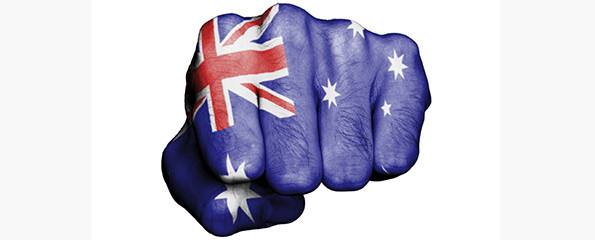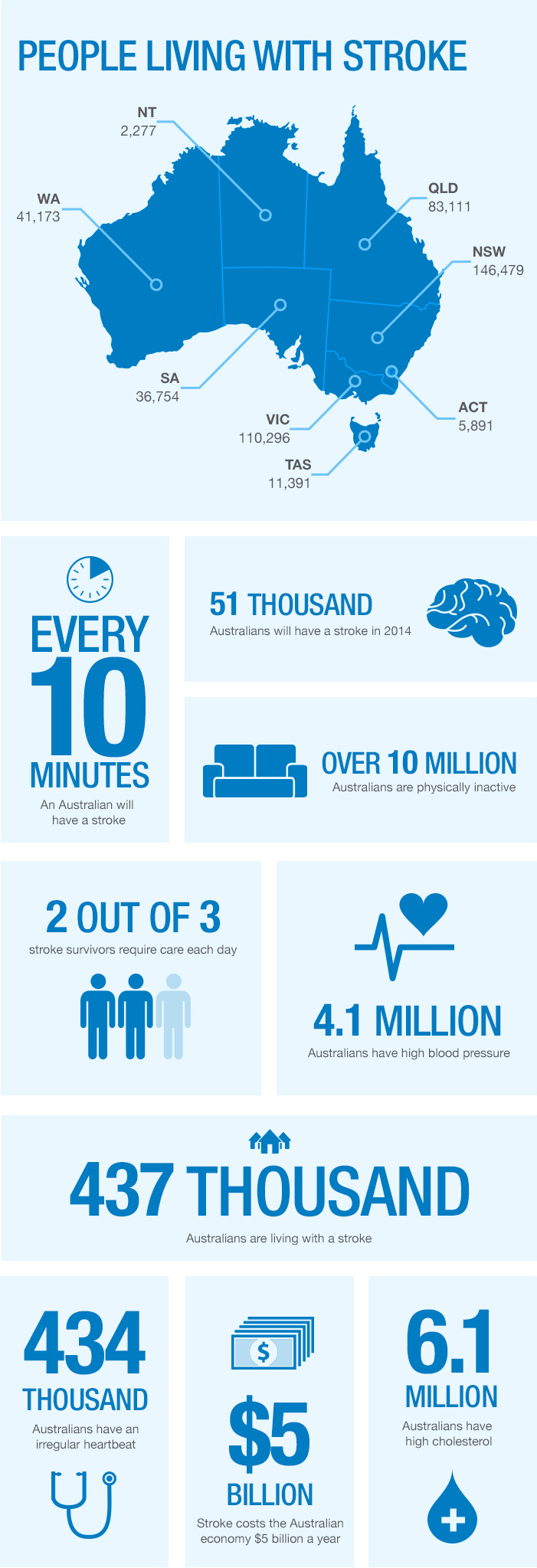No postcode untouched by stroke
Stroke is a devastating disease that places significant demands on health services, families and the community across the country. This disease kills more women than breast cancer and more men than prostate cancer.
In an Australian first, the impact of stroke across the Australian landscape, its cities and towns has been mapped by the National Stroke Foundation.
The Stroke in Australia: No postcode untouched report and website uses data compiled and analysed by Deloitte Access Economics to reveal just how big the stroke challenge is in each Australian federal electorate. This data includes estimates of the number of strokes, survivors and the death rate.
“Our report shows that no postcode has been left untouched by stroke,” National Stroke Foundation CEO Dr Erin Lalor said.
Launching the report at Parliament House in Canberra, Dr Lalor said that it highlights the true impact of stroke in our community.
“Every ten minutes someone in Australia will suffer a stroke and there are a thousand cases each week. Close to 12,000 people will die in 2014 from stroke and two-thirds of those that survive will be disabled.
“Despite successive governments recognising stroke as a national health priority, Australia does not have a federally funded strategy or the care services to address widespread need,” Dr Lalor said.
The report has identified where stroke is having its biggest impact and where stroke survivor support is most vital.
Tasmania and South Australia are the states with the highest stroke burden per head of population while NSW has five of the top ten stroke survivor hot spots and six of the top ten for number of strokes. State borders are no barrier with vast tracts of regional Victoria represented in the top quarter of Australian electorates for stroke burden.
“By ranking electorates we can understand where the impact is greatest. While this ranking can help with service planning and coordination, our report demonstrates that the burden of stroke is significant in all parts of the country.”
Close to 440,000 Australians are living with the impact of stroke. The disease also costs the Australian economy $5 billion per year, including $3 billion in lost productivity.
Australians most at risk of a stroke include the 6.1 million people living with high cholesterol, 4.1 million with high blood pressure and 434,000 with atrial fibrillation – an irregular heartbeat that can cause a five-fold increase in risk of stroke. A lack of physical exercise is also a risk factor.
“The Stroke Foundation is urging national action to tackle stroke because all Australians need and deserve access to quality stroke care,” Dr Lalor said.
Top five stroke hotspots
| Nearest city / town | Federal electorate | Number of stroke survivors living in the electorate | Number of strokes in 2014 | Number of deaths in 2014 |
| Adelaide, SA | Hindmarsh | 3944 | 519 | 136 |
| Port Macquarie, NSW | Lyne | 3873 | 479 | 113 |
| Western Port Bay, VIC | Flinders | 3810 | 462 | 108 |
| Adelaide, SA | Sturt | 3761 | 477 | 118 |
| Shellharbour / Kiama, NSW | Gilmore | 3718 | 446 | 103 |
The number of people living with stroke in Australia
| States and Territories | Number of stroke survivors in 2014 (Number per 100k) | Number of strokes in 2014 (Number per 100k) | Number of deaths in 2014 (Deaths per 100k) |
| Australia | 437,372 (1,864) | 51,031 (217) | 11,418 (49) |
| NSW | 146,479 (1,940) | 17,273 (229) | 3,938 (52) |
| VIC | 110,296 (1,886) | 13,017 (223) | 2,954 (51) |
| QLD | 83,111 (1,760) | 9,443 (200) | 2,015 (43) |
| WA | 41,173 (1,687) | 4,652 (191) | 999 (41) |
| SA | 36,754 (2109) | 4,461 (256) | 1,054 (60) |
| TAS | 1 1,391 (2,110) | 1,329 (246) | 292 (54) |
| ACT | 5,891 (1,509) | 655 (168) | 138 (35) |
| NT | 2,277 (993) | 201 (88) | 28 (12) |
For further information visit www.strokefoundation.com.au
(Source: National Stroke Foundation Australia)
Dates
Tags
Created by:

 Login
Login















